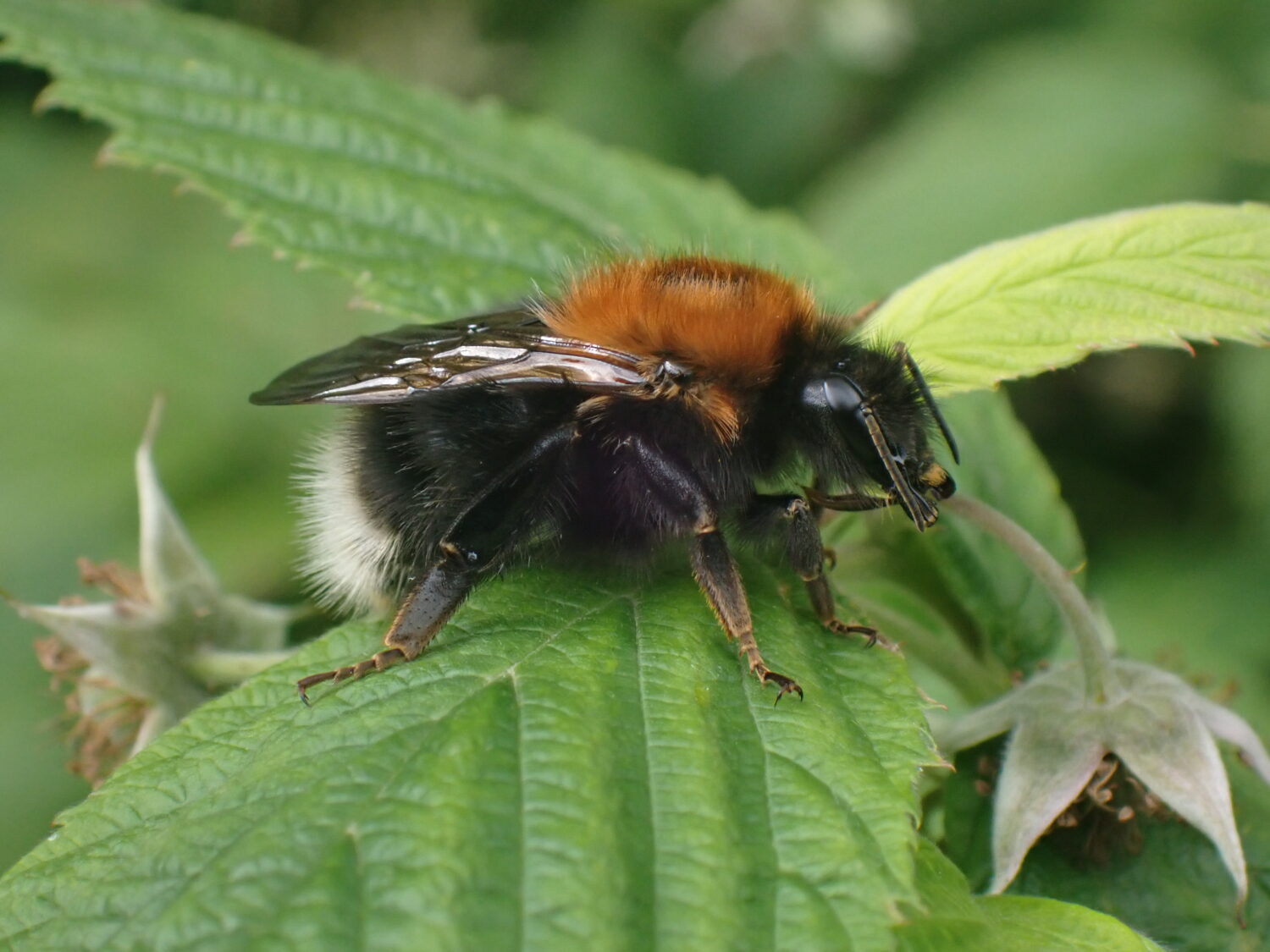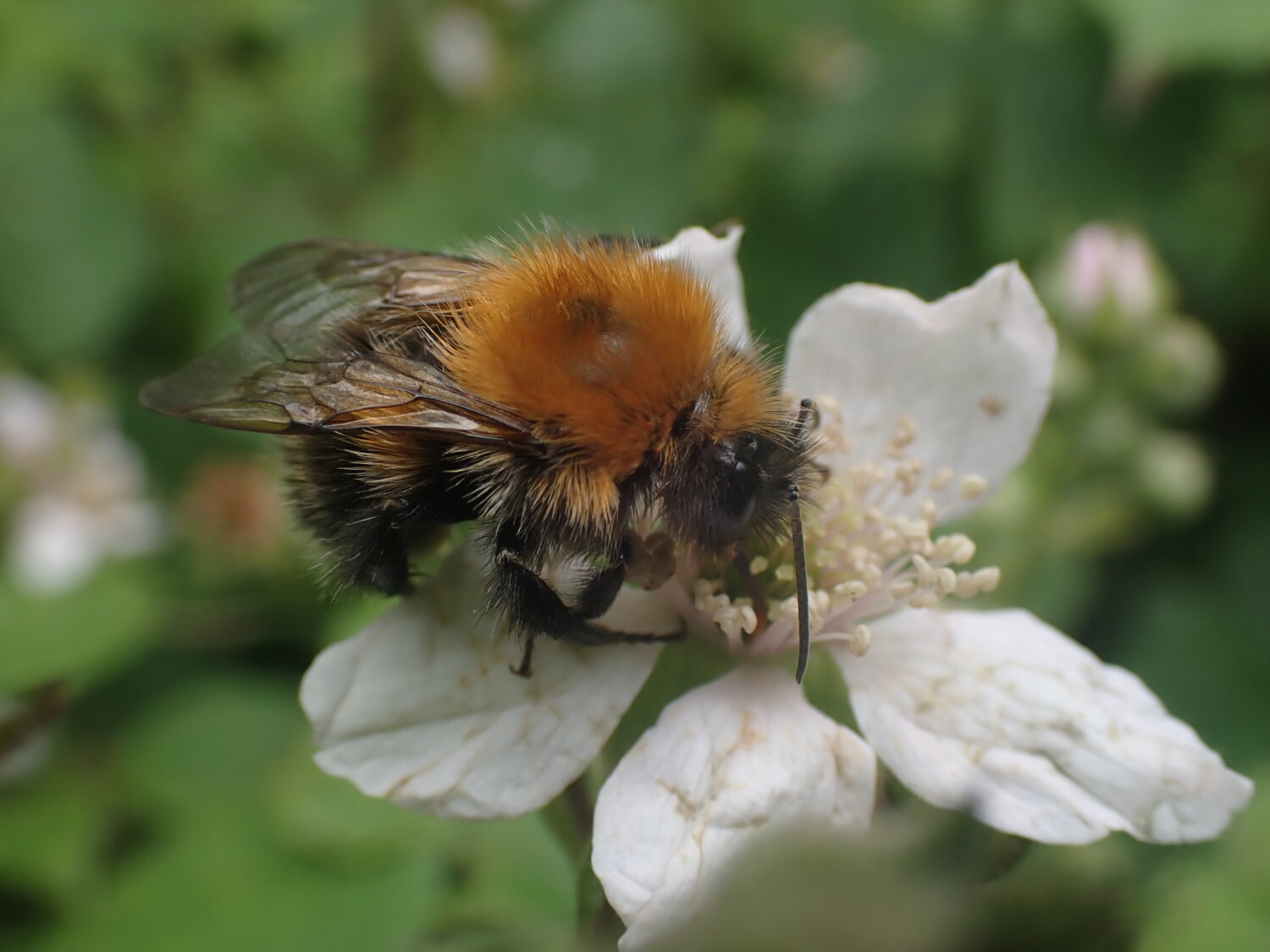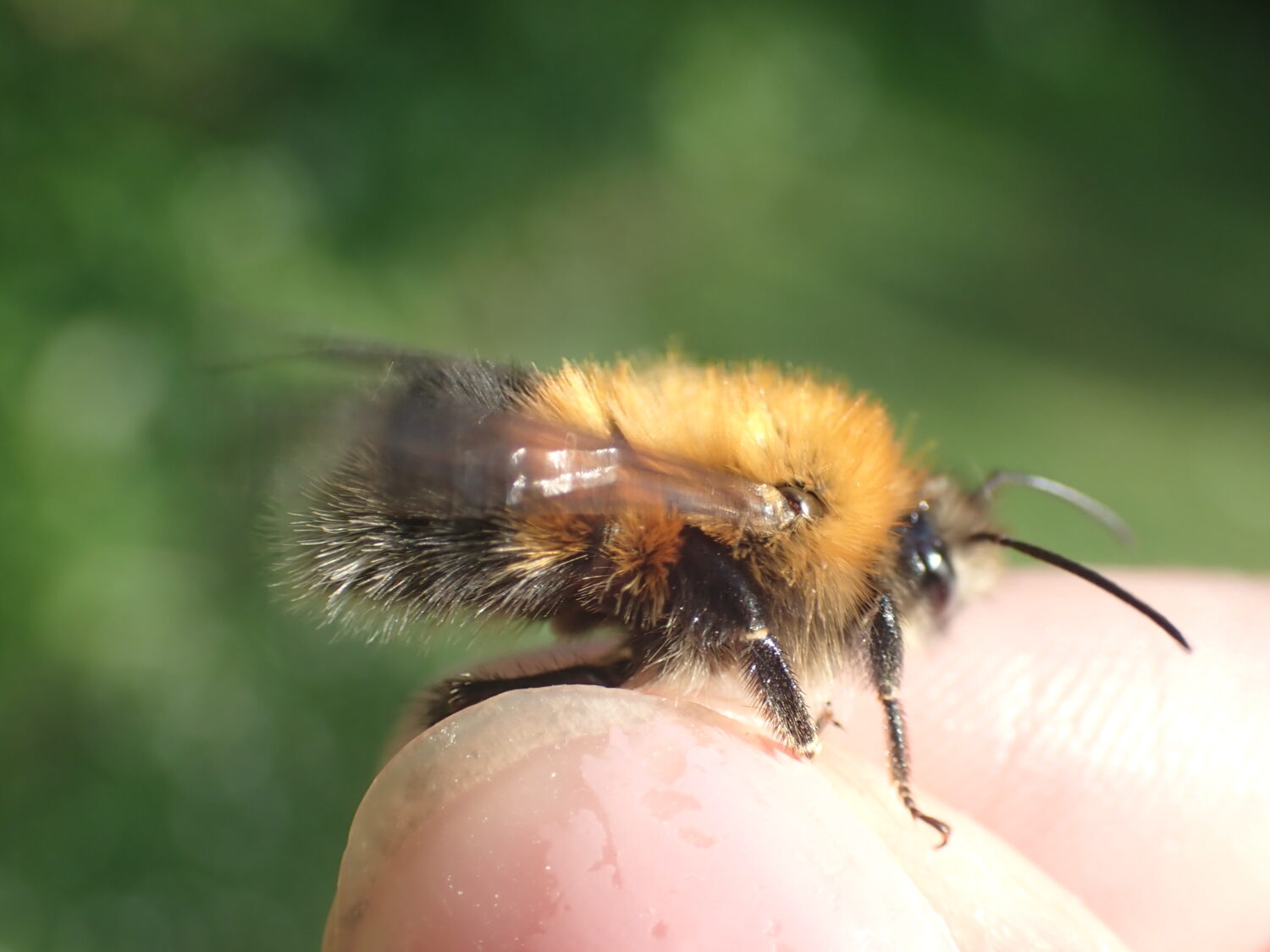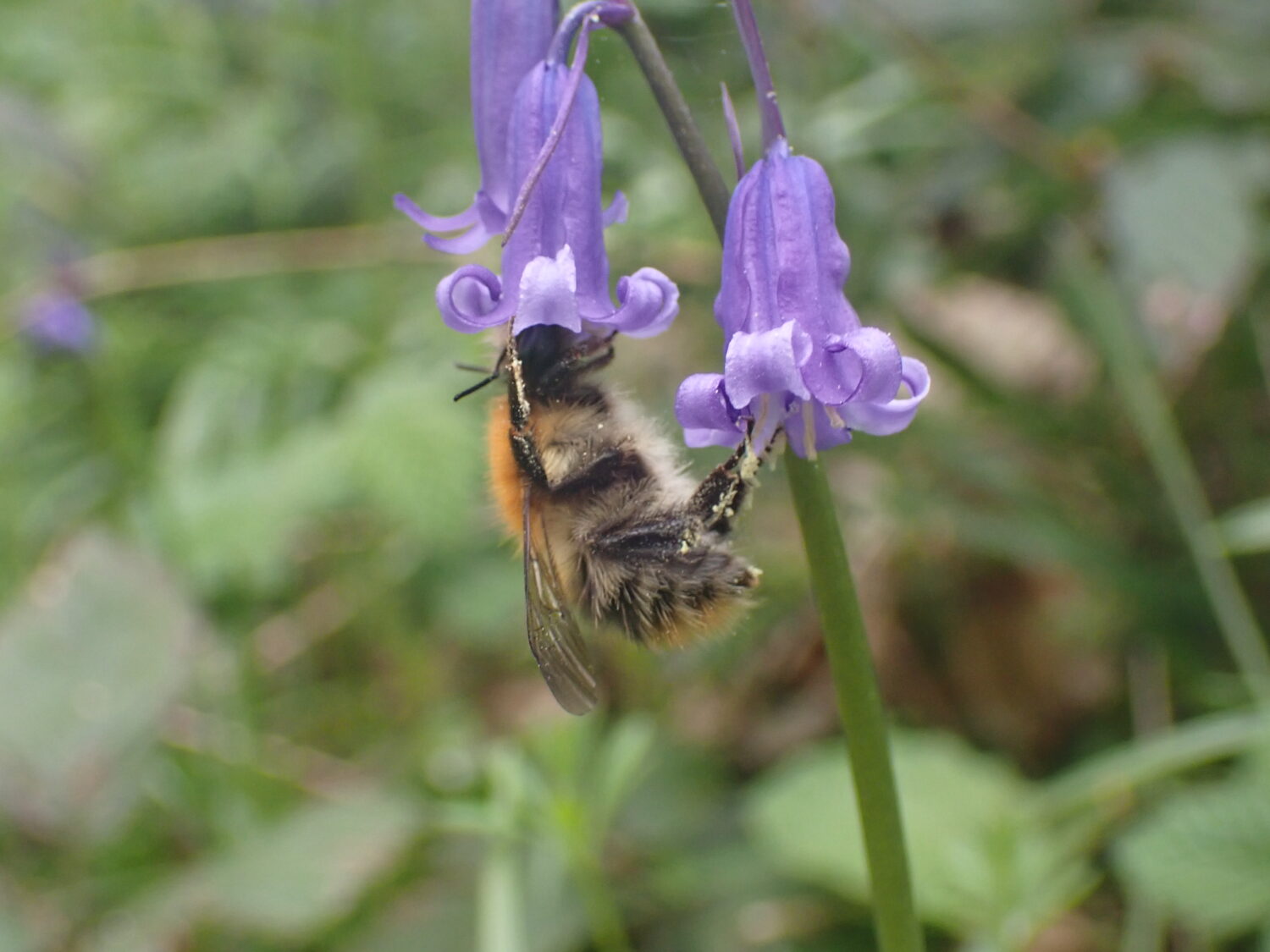Bombus hypnorum
Fast facts
- Common name(s)
- Tree Bumblebee
- Scientific name
- Bombus hypnorum
- Bee group
- A species of social bumblebee
- When to see it
- March – October
Description
The Tree Bumblebee is unique among British bumblebees in both its appearance and nesting habitat. A bumblebee of success, the Tree Bumblebee has rapidly become one of the most common bumblebees in Britain since its arrival in 2001. Nests are found aerially in tree cavities, old bird boxes and roof eaves.
Identification
The colour pattern of the Tree Bumblebee is unique among British bumblebees. All castes (queens, workers and males) have a chestnut-brown thorax, black abdomen and a white tail. The white tail helps to separate it from the gingery Common Carder (Bombus pascuorum). Queens are the first to be seen in the year and workers are observed through spring and summer. New queens and males are produced later in the season when nests are coming towards their end.
Queens and workers
Queens and workers have the same colour pattern and only differ in their size. Workers resemble small queens. Both have pollen baskets on their hind legs that appear shiny without the presence of pollen.
Did you know?
A recent arrival to the North East, the Tree Bumblebee was first recorded in 2007 from Simonside in Northumberland.
Males
Males have the same colour pattern as females. However, the chestnut hairs are often more extensive and spread onto the abdomen. Males also have a conspicuous tuft of chestnut hairs on top of the head. Males can be seen ‘swarming’ outside nest entrances awaiting emerging new queens.
Characteristic of male bumblebees, males have longer curved antennae and lack the shiny pollen baskets on their hind legs.
More images of the Tree Bumblebee can be viewed here.
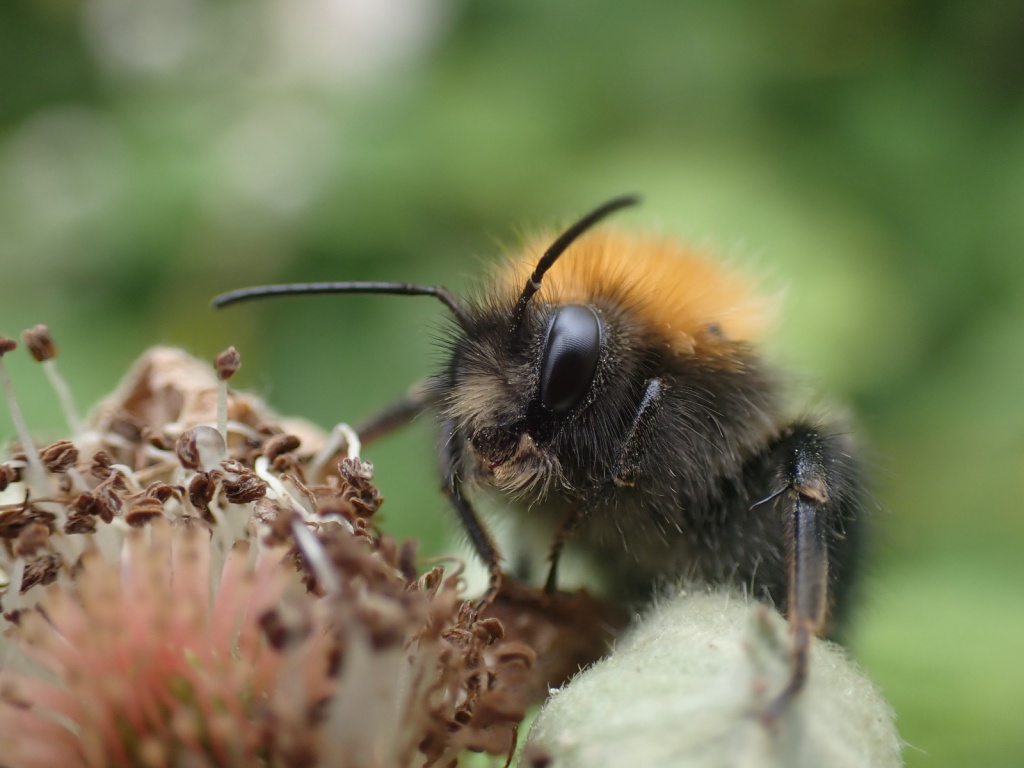
Spotted this bee?
Share your sighting of the Tree Bumblebee and other North East Bee Hunt target species to contribute to the conservation and study of our region’s bees.
Similar species
Common Carder
Common Carders are gingery bumblebees with varying extents of black hair on the abdomen. This means from some angles, and without view of the tail, Common Carders can resemble Tree Bumblebees. However, Common Carders do not have a white tail.
Ecology
A recent arrival to the UK from mainland Europe, the Tree Bumblebee was first recorded in 2001 in Wiltshire. First reported in the North East in 2007 and Scotland in 2013, it has rapidly spread to become one of the most common and widespread bumblebees.
Tree Bumblebees can be found in a variety of habitats and forage on a wide range of flowers. Typically emerging from hibernation in late February or March, queens are among the first to be seen in the year. Nests can contain around 150 workers and are typically found in aerial locations such as within tree cavities, old bird boxes and roof eaves.
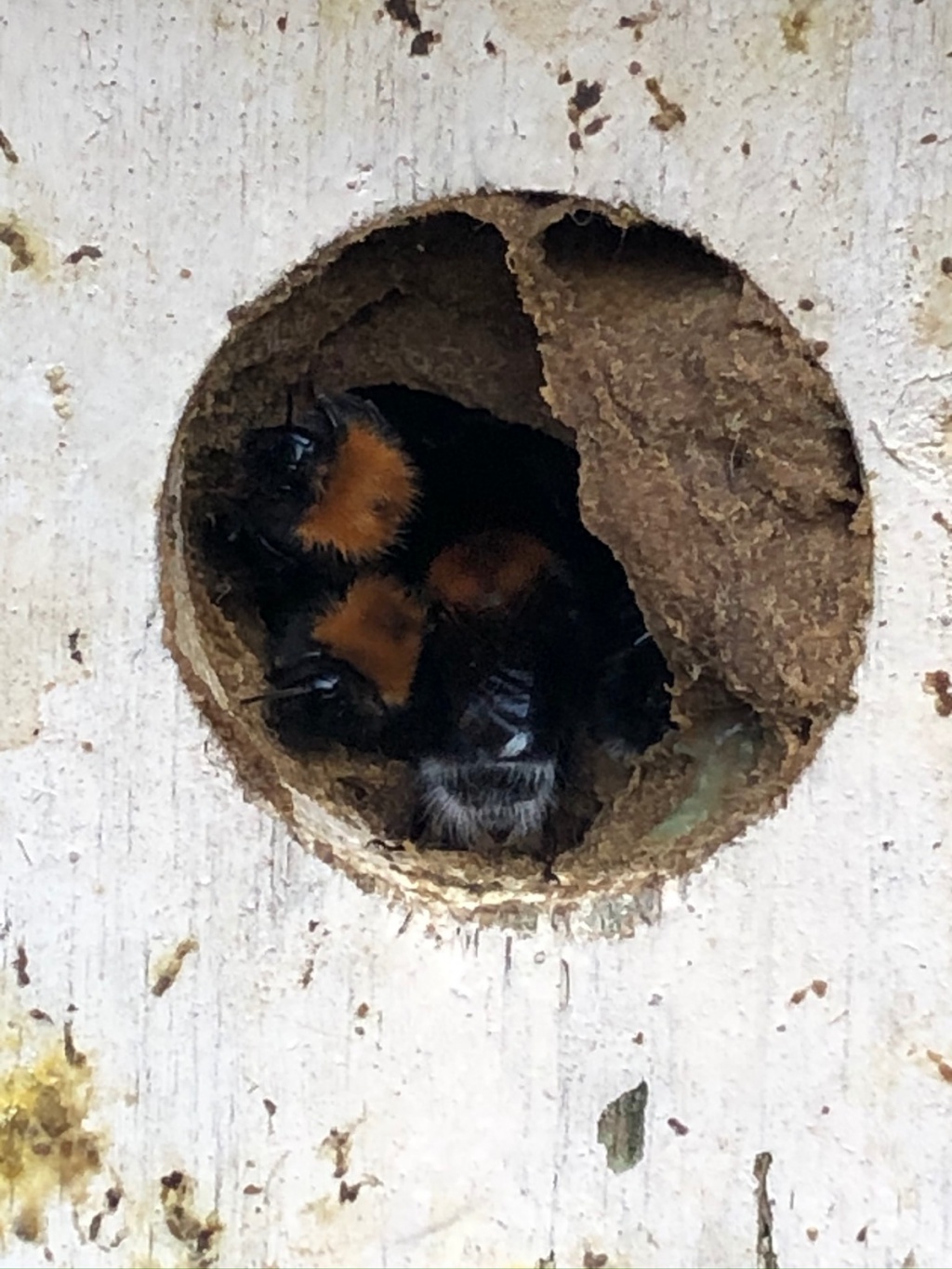
Regional Distribution
The Tree Bumblebee is considered a common and widespread bumblebee in the North East. In 2020, the Tree Bumblebee was one of the most recorded species of the North East Bee Hunt with 280 records received. Despite being a relatively recent arrival to Britain, the Tree Bumblebee is now one of the common ‘Big Seven’ bumblebees in Britain.

